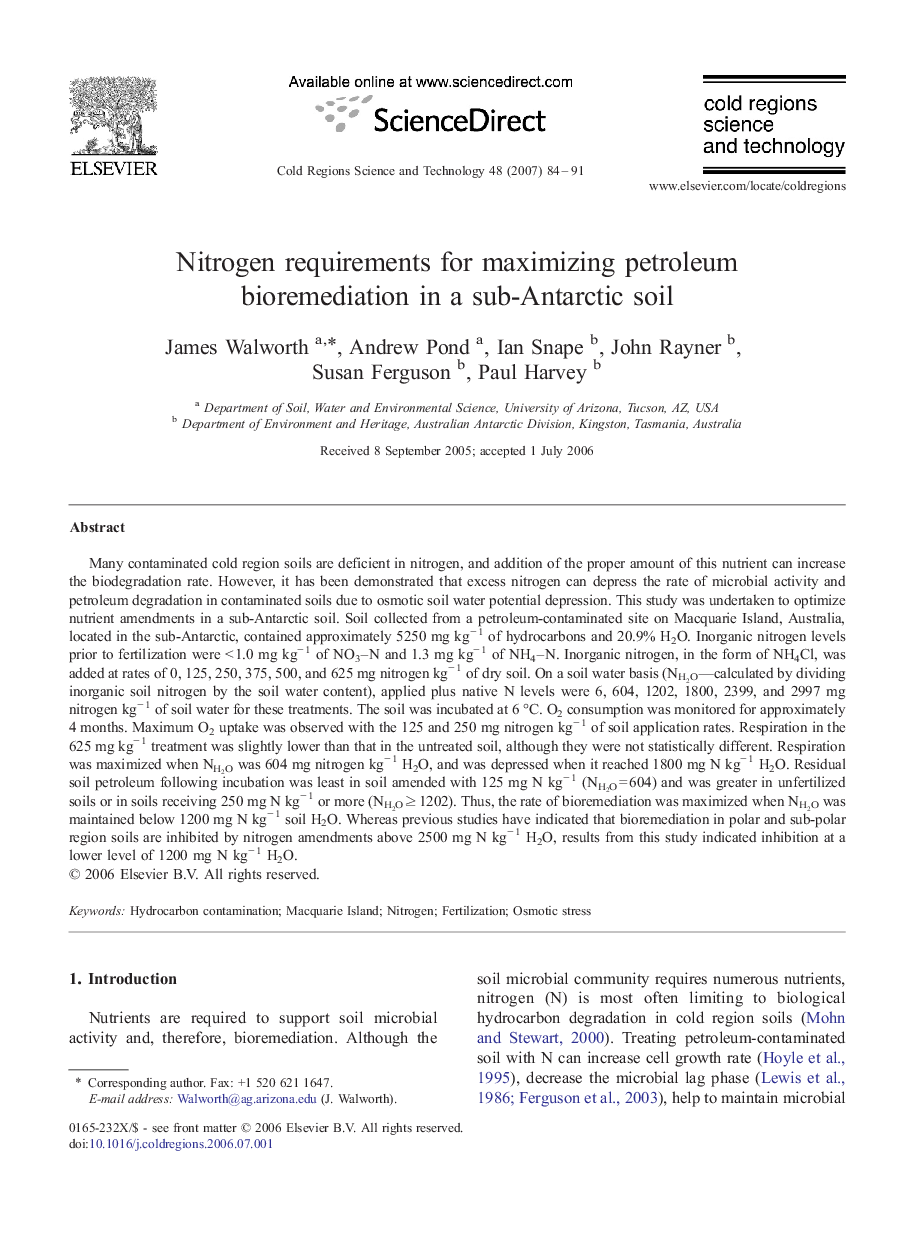| Article ID | Journal | Published Year | Pages | File Type |
|---|---|---|---|---|
| 4676866 | Cold Regions Science and Technology | 2007 | 8 Pages |
Many contaminated cold region soils are deficient in nitrogen, and addition of the proper amount of this nutrient can increase the biodegradation rate. However, it has been demonstrated that excess nitrogen can depress the rate of microbial activity and petroleum degradation in contaminated soils due to osmotic soil water potential depression. This study was undertaken to optimize nutrient amendments in a sub-Antarctic soil. Soil collected from a petroleum-contaminated site on Macquarie Island, Australia, located in the sub-Antarctic, contained approximately 5250 mg kg− 1 of hydrocarbons and 20.9% H2O. Inorganic nitrogen levels prior to fertilization were < 1.0 mg kg− 1 of NO3–N and 1.3 mg kg− 1 of NH4–N. Inorganic nitrogen, in the form of NH4Cl, was added at rates of 0, 125, 250, 375, 500, and 625 mg nitrogen kg− 1 of dry soil. On a soil water basis (NH2O—calculated by dividing inorganic soil nitrogen by the soil water content), applied plus native N levels were 6, 604, 1202, 1800, 2399, and 2997 mg nitrogen kg− 1 of soil water for these treatments. The soil was incubated at 6 °C. O2 consumption was monitored for approximately 4 months. Maximum O2 uptake was observed with the 125 and 250 mg nitrogen kg− 1 of soil application rates. Respiration in the 625 mg kg− 1 treatment was slightly lower than that in the untreated soil, although they were not statistically different. Respiration was maximized when NH2O was 604 mg nitrogen kg− 1 H2O, and was depressed when it reached 1800 mg N kg− 1 H2O. Residual soil petroleum following incubation was least in soil amended with 125 mg N kg− 1 (NH2O = 604) and was greater in unfertilized soils or in soils receiving 250 mg N kg− 1 or more (NH2O ≥ 1202). Thus, the rate of bioremediation was maximized when NH2O was maintained below 1200 mg N kg− 1 soil H2O. Whereas previous studies have indicated that bioremediation in polar and sub-polar region soils are inhibited by nitrogen amendments above 2500 mg N kg− 1 H2O, results from this study indicated inhibition at a lower level of 1200 mg N kg− 1 H2O.
